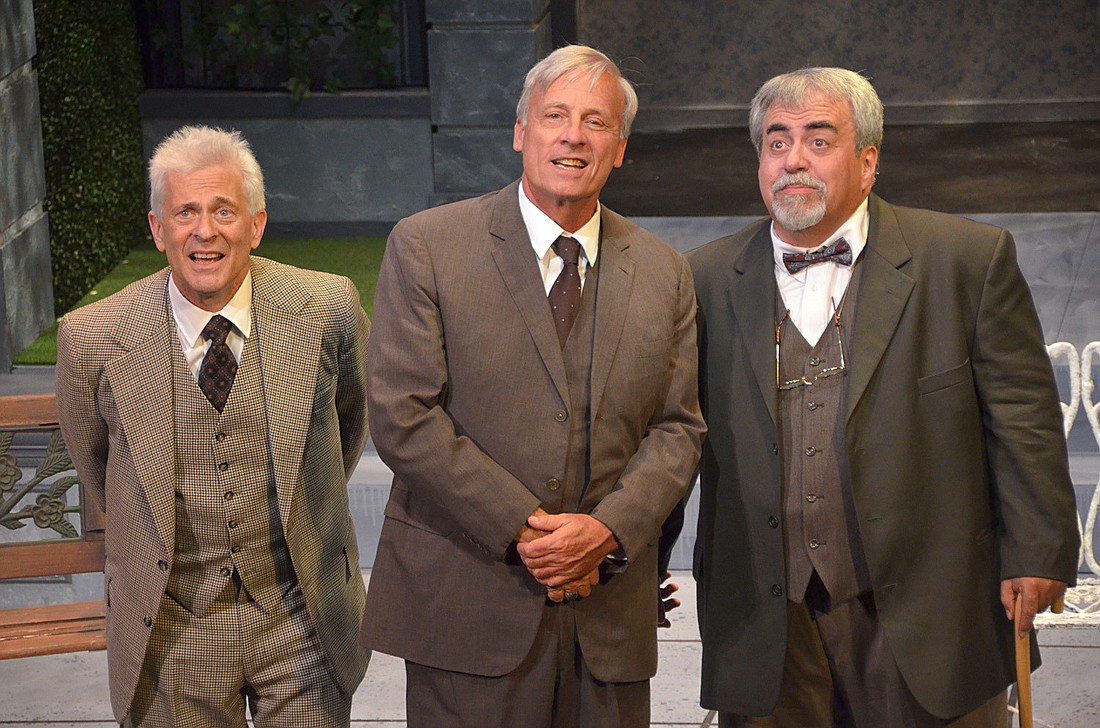- November 26, 2024
-
-
Loading

Loading

In this slight but charming comedy by French playwright Gérald Sibleyras, three aging World War I veterans plot a sortie on the French countryside from the terrace of their old soldiers' home. Set in 1959, and translated into English by Tom Stoppard, the play won the 2006 Laurence Olivier Award for best new comedy. The dialogue cleverly combines the shared reminiscences of military life with the personal idiosyncrasies of these quibbling duffers for whom all the choices they’ve made in their lives will soon end in identical result. The Banyan Theater Company production, thoughtfully directed by Dan Higgs, is a bittersweet, often hilarious meditation on that stage of life on which one lives out his last hurrah, symbolized by the grove of poplars that the group gazes at from the confines of their retirement abode.
Timing is everything in this dialogue-driven piece, and the three actors who portray the trio embrace their characters’ vulnerabilities with relish and skill. Peter Thomasson portrays the play’s most fleshed-out character, Gustave, a curmudgeonly aristocrat who hides his deep-seated fears behind a haughty facade, making sweeping declarations such as, "Nothing revolts me more than a picnic!"
Especially sympathetic Henri, endearingly played by Joseph Parra, putters around the town with his cane, ogling the young women with earthy delight. Alan Kitty rounds out the group as Philippe, who faints with regularity due to the shrapnel in his head and fears that the Head Nun of the establishment is plotting to do away with him. At one point, Phillippe and Gustave are arguing about whether women prefer men who make them laugh or who make them climax, and Henri comments after a perfect pause, “Both at the same time is difficult.”
The fourth character in the play is a stone statue of a dog, which occupies the outdoor terrace of the home, which has been nicely rendered to suggest a gardened, peaceful retreat by set designer Chris McVicker. Costume designer Ross Boehringer has dressed these vets in similar period three-piece suits, echoing the uniforms of their former occupation.